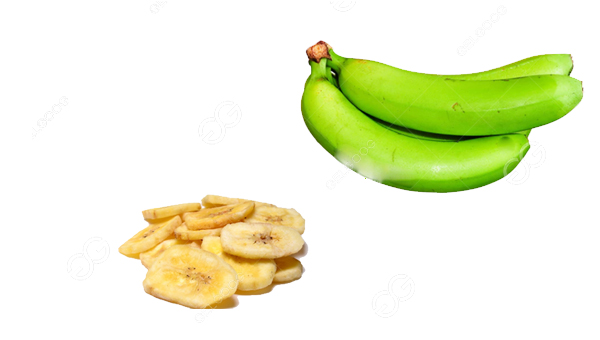Banana chips are a popular snack enjoyed by people around the world for their crispy texture and delightful flavor. While homemade versions are cherished in many households, the production of banana chips on an industrial scale involves a meticulous process that ensures quality, consistency, and efficiency. Let’s delve into the fascinating journey of how are banana chips manufactured.

1. Selection of raw materials: The process begins with the careful selection of ripe bananas. Ideally, bananas at the perfect stage of ripeness, not too ripe, are chosen to achieve the desired texture and flavor. These bananas are sourced from farms known for producing high-quality fruit.
2. Washing and peeling: Upon arrival at the factory, the bananas undergo thorough washing to remove any dirt and impurities. Once cleaned, they are peeled using specialized machinery designed to efficiently peel large quantities of bananas. The peeled bananas are then inspected for any defects or imperfections.
3. Slicing: After the peeling process, the bananas are sliced into thin, uniform chips. This step is crucial for ensuring consistency in size and thickness, which is essential for even frying and uniform texture in the final product. Advanced slicing machines are employed to achieve precision and efficiency.
4. Pre-treatment: The banana slices undergo pre-treatment to preserve their color and prevent oxidation. This typically involves immersing the slices in a solution containing citric acid or other antioxidants. This step helps maintain the natural appearance of the bananas and extends their shelf life.
5. Frying: The pre-treated banana slices are then fried in hot oil until they achieve the desired crispiness and golden brown color. Continuous fryers are commonly used in industrial-scale production to ensure consistent frying temperatures and cooking times. The frying process also adds flavor to the chips, giving them their characteristic taste.
6. Seasoning: Once fried, the banana chips may be seasoned with various flavorings to enhance their taste. Common seasonings include salt, chili powder, garlic powder, or other spices, depending on regional preferences and market demand. Seasoning is typically done immediately after frying when the chips are still hot and receptive to flavor absorption.
7. Cooling and packaging: After seasoning, the banana chips are cooled down to room temperature to ensure crispiness and prevent moisture buildup, which could lead to sogginess. They are then packaged in airtight containers or pouches to preserve freshness and extend shelf life. Automated packaging machines weigh and seal the packages, ensuring accuracy and efficiency.
8. Quality control: Throughout the manufacturing process, quality control measures are implemented to ensure that the banana chips meet strict standards for taste, texture, and appearance. Samples are regularly taken from the production line for inspection, and any deviations from the quality parameters are promptly addressed to maintain consistency and customer satisfaction.
9. Distribution: Once packaged, the banana chips are ready for distribution to retailers, supermarkets, and snack distributors. They are shipped in bulk quantities to various destinations, where they are made available to consumers eager to enjoy this beloved snack.
In conclusion, the manufacturing process of banana chips in factories involves a series of precise steps, from selecting the finest raw materials to packaging the finished product. Advanced banana chips machinery, stringent quality control measures, and attention to detail are integral to producing banana chips that consistently meet consumer expectations for taste, texture, and quality.